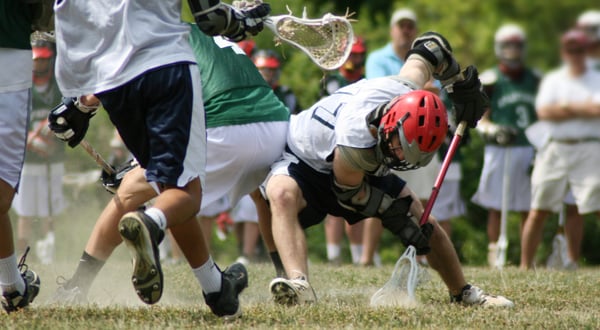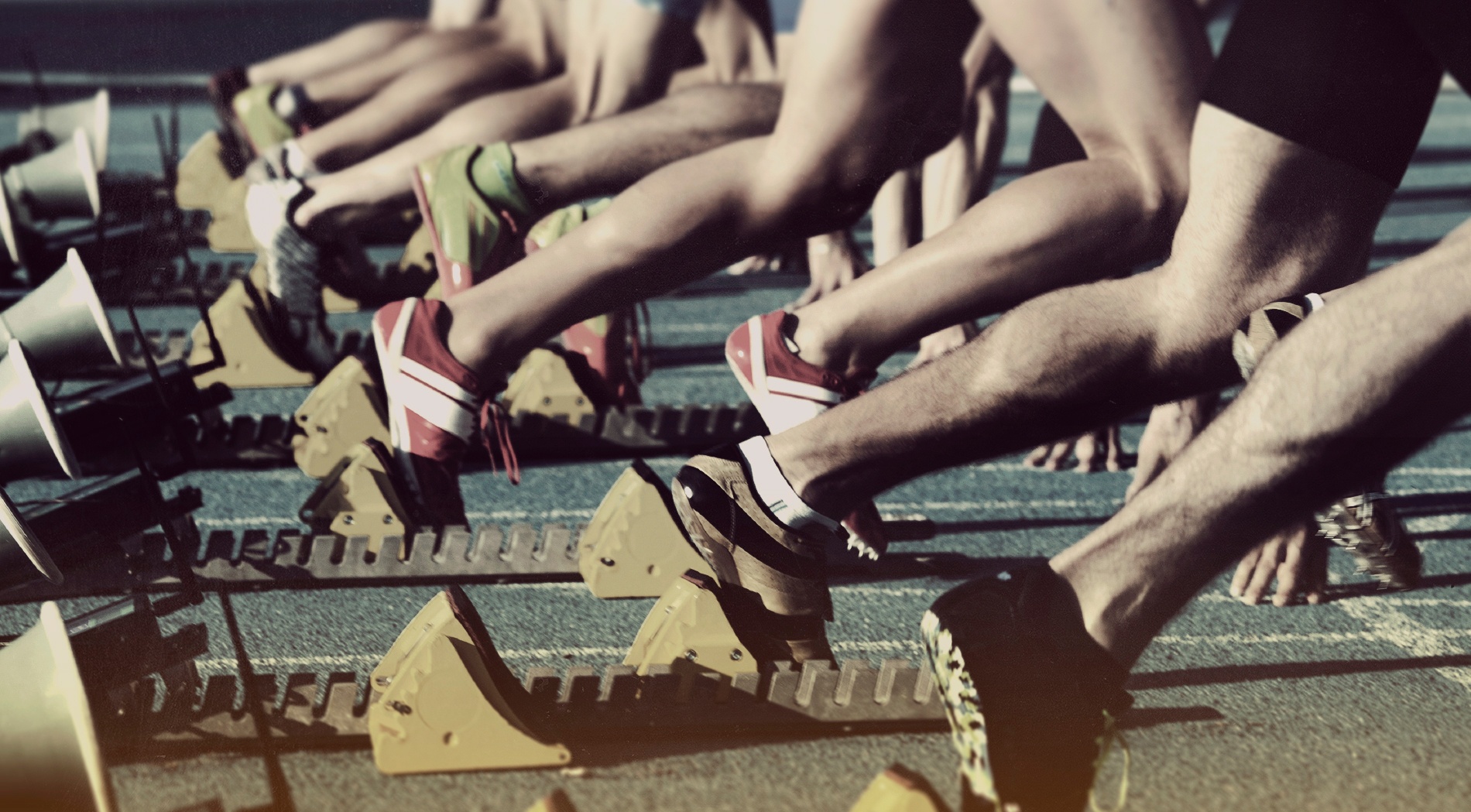In-Season Strength and Conditioning to Build Speed and Power

What happens in an elite training program as athletes move into the thick of their competition season? In short, it depends on the sport. From the golf swing to the first 15 yards of a sprint, explosiveness and acceleration are traits that can be perfected with proper training. Once athletes have a basic technical skill set, then they can begin to build strength and power.
Speed
Speed requires a level of strength. It makes sense that without sufficient strength to propel one’s body on land or through water there will not be significant speed available. This preseason blog post is focused on strength training as the foundation for in-season sport-specific work. In order to discuss strength and speed, an understanding of the body's physiology is helpful. There are different muscle fiber types within any muscle. We will consider two primary types—slow twitch fibers (known as MyHC I) and fast twitch fibers (known as MyHC II…these are further divided into IIA and IIX if you are interested in researching this). These variations are characterized by their function within the muscle, namely the velocity of contraction they produce. Each athlete carries different ratios of MyHC I and II in their muscles, and this, in part, is why some people are described as more sprint-oriented while others appear to have slower acceleration speeds. It turns out that there is a relationship between maximal concentric strength and percentage of MyHC II fibers, meaning a person with a larger proportion of fast twitch fibers will be able to obtain higher muscle force and power output during fast movements than someone with a smaller proportion of fast twitch fibers.
Increasing Speed
Researchers have found that heavy resistance exercise training will increase MyHC IIA and decrease MyHC IIX, while MyHC I is essentially unaffected. When looking at the whole muscle, this decrease is more than outweighed by gain in contractile strength and power. The enhancement in muscle force and power following 3-4 months of heavy resistance strength training mainly occurs because fast fibers exhibit a two fold greater hypertrophy overall than slow fibers (remember slow fibers are relatively unaltered). BridgeAthletic software is a trusted platfrom that assists athletes in coordinating closely with strength and conditioning training coaches to build their athletic strength, and ultimately increase performance.
Improving Power
Improving power comes from how well tasks are executed in training. To develop your power, athletes have to emphasize the initiation of whatever propulsive movement they are about to perform. In the weight room and in sport-specific training, athletes choose to execute their drills with strength and speed, instead of going through the motions steadily. Changing how athletes perform a power movement will change the body’s natural inclination for that motion as the neuromuscular system adapts to the training stimulus. Repeated power exercises such as squat jumps and weighted ball tosses help the engaged muscles learn to transition from extension to contraction as quickly as possible. A recent study concluded that 4 weeks of drop jump training improved jumping performance in well-trained athletes without a concomitant change in strength. The improved performance is thought to be due to neural factors that control the jump movement. By practicing a movement with power, athletes can train their brain to execute the movement without any increase in strength.
Recap
Greater speed and power are achieved through training one’s mind and body, and both require a foundation of strength training. While everyone may start with different muscular compositions and propensity for speed, each athlete can work hard to increase the proportion of fast fibers present in muscle and teach the body to be explosive. For more information regarding preseason strength training, and the importance of strength and conditioning read more here.
References:
Aagaard P, Andersen JL, Dyhre-Poulsen P, Leffers AM, Wagner A, Magnusson SP, Halkjaer Kristensen J, Simonsen EB. A mechanism for increased contractile strength of human pinnate muscle in response to strength training: changes in muscle architecture. J Physiol 2001: 534: 613–623.
Aagaard P. Making muscles stronger: exercise, nutrition, drugs. J Musculoskel Neuron Interact 2004: 4: 165–174.
Andersen JL, Aagaard P. Myosin heavy chain IIX overshooting in human skeletal muscle. Muscle and Nerve 2000: 23: 1095–1104.
Fry AC. The role of resistance exercise intensity on muscle fibre adaptations. Sports Med 2004: 34: 663–679.
Kosek DJ, Kim JS, Petrella JK, Cross JM, Bamman MM. Efficacy of 3 days/wk resistance training on myofiber hypertrophy and myogenic mechanisms in young vs. older adults. J Appl Physiol 2006: 101: 531–544.
Neuromuscular adaptations to 4 weeks of intensive drop jump training in well-trained athletes. Alkjaer T, Meyland J, Raffalt PC, Lundbye-Jensen J, Simonsen EB
Physiol Rep. 2013 Oct;1(5):e00099. doi: 10.1002/phy2.99. Epub 2013 Oct 16.
Scand J Med Sci Sports. 2010 Oct;20 Suppl 2:32-8. doi: 10.1111/j.1600-0838.2010.01196.x. Effects of strength training on muscle fiber types and size; consequences for athletes training for high-intensitysport. Andersen JL, Aagaard P.
Related Posts

The Best Bench Press Variation You’re...
This post is part of our Coaches Corner series with Taylor Rimmer. Taylor is NSCA-CPT, StrongFirst...

Does Powerlifting Harm Heart Health?
A recent study has discovered that a 12-week supervised strength training program (SSTP) may result...
-1.png)
Barefoot Running: Is It For You? |...
Run Free: Consider Less Cushion
Updated October 2020:
With more athletes looking for ways to...



